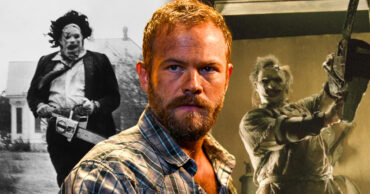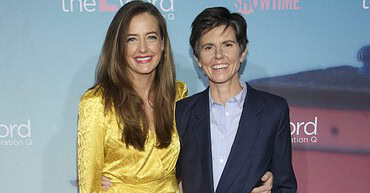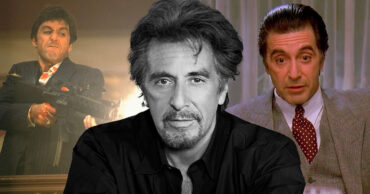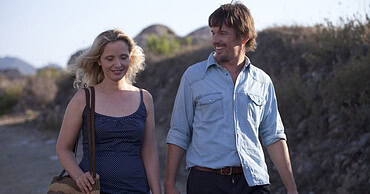
There was a strange trend that started in the ‘70s where live-action entertainment began bleeding into Saturday morning cartoons for children. Shows like Happy Days gave us a cartoon featuring the Fonz. Levern and Shirley along with Mork and Mindy also kept up this trend. Then around the early to mid-‘80s popular films like The Ghostbusters (1984) became a mega-hit with a just as popular toy line called The Real Ghostbusters. But not all franchises we as popular. Here is a list of some lesser-known animated adaptations of popular films that Hollywood tried to cash in on even if the children in question weren’t old enough to see the impetus of what their shows were based on
Teen Wolf (1986-1987):
Teens Wolf (1985) starring Michael J. Fox told the story of Scott Howard, an awkward only child who lived with his father Harold. Trying to fit in at his high school, Scott finds out that he comes from a line of werewolves, and rather than hiding his newfound powers, he uses them to become the most popular kid in school. A borderline boob comedy, the film is filled with drug references, wild teen parties, and scantily clad high school girls. The perfect storyline for children’s programming. According to Wikipedia, the show changed a few key elements such as giving Scott a little sister named Lupe, who doesn’t know if she has the Lycanthropic gene because she is too young to know and sometimes it skips a generation. Grandparents were also added to round out the family. The show did, however, try to tackle heavier subjects such as growing up and fitting in, to civil rights and bigotry against those who are different. Lasting just two seasons, the show only produced 21 total episodes.
Bill and Ted’s Excellent Adventures (1990-1991):
Following the moderate success of the first installment of the Bill and Ted franchise, Bill and Ted’s Excellent Adventure (1989), where the boys travel through time with the help of their friend from the future named Rufus to find historical figures in order to pass an important history presentation, get their band Wyld Stallyns off the ground, and create music to save the world. This is actually a halfway decent concept for a kid’s show. Played by their onscreen counterparts, the show brought back Alex Winter, Keanu Reeves, and comedian George Carlin to play Bill, Ted, and Rufus, which was pretty amazing given the original cast rarely involves themselves with cartoon spin-offs. In the show, the boys are tasked to travel through several time periods and make sure that history stays on course, more or less. Along the way, they meet several historical figures while enlightening young audiences about why these people shaped the world. Like I said, not a bad way to teach children about history. Unfortunately, the show only lasted two seasons, airing 21 episodes during its run.
Back to the Future (1991-1992):
Without a doubt, one of the more popular franchises to spawn from the ‘80s, Back to the Future (1985) is one of the most recognizable series in film history leaving it ripe for the animation treatment. The plot revolved mostly around Doc Brown and his family from Part 3, where they get into a slew of misadventures throughout time thanks to the help of a newly modified DeLorean and, on occasion, their steam-powered time train. Similar to Bill and Ted in concept, the show starred Mary Steenburgen reprising her role as Doc’s wife Clara and Thomas F. Wilson came back as the Biff Tannen who now has a son, Biff Jr. One difference between the previous show and this, was the addition of live-action segments where Christopher Lloyd plays Doc Brown (although voiced by Dan Castellaneta in the animated role) showing off different scientific experiments with his new lab assistant played by none other than Bill Nye the Science Guy. According to Wiki, Nye also served as the show’s technical advisor, which led to him starring in his own show. The series lasted 26 episodes over two seasons, spun off a comic book, and was aired on ABC, Fox, and eventually rerun on Nickelodeon.
Highlander: The Animated Series (1994-1996):
Highlander: The Animated Series worked as a nonsensical spin-off of the film series much in the same way all of the Highlander live-action sequels did. Take the idea, forget where it came from, and add a bunch of weird crap that has little to nothing to do with the first movie. I love Highlander (1986), but damn if those ridiculous sequels weren’t dumb. They made the Immortals aliens in the second one and sorcerers in the other one or something. I dunno. Who cares? The franchise has always been a total mess, even down to the moderately decent Highlander: The Series from 1992. But the animated version might just take “The Prize” for the most audaciously insane.
Ready for this one? Here is the Wiki synopsis, because I’m way too tired to try to explain this mess:
The series is set in the far future of the 27th century. The last living descendant of the original Highlander fights against the evil dictator Kortan.
The story unfolds on post-apocalyptic Earth, after a meteorite collision nearly wipes out all human civilization after setting off nuclear weapons. Following this catastrophe, Connor Macleod (the protagonist of the original film) and the other Immortals forswear the Game of fighting each other until only one Immortal remains to win the Prize. Instead, the Immortals swear to preserve human knowledge and help humanity. They cast away their swords and call themselvesJettators (from the French jette, “thrown away”.)
But one Immortal, Kortan, refuses to swear the oath, he still seeks the Prize and now wishes to dominate the world. Connor challenges Kortan to a duel and is defeated and killed, as any Immortal who breaks the oath is destined to die. However, with Connor’s death comes the prophecy of the rise of a new Immortal, unbound by the oath, who will defeat Kortan. Uncontested by the Jettators and nigh-unkillable by mortals, Kortan establishes an empire controlling most of the planet, which he rules from his fortress Mogonda.
Seven hundred years later, a Highland youth named Quentin is killed trying to defend his clan, the Dundee, from Kortan’s slavers. He is the prophesied Immortal and returns to life. His dying mother reveals his true identity to be Quentin MacLeod from clan MacLeod, “The Last of the MacLeods”. Quentin meets the Jetattor don Vincente Marino Ramirez, who becomes his mentor. Ramirez teaches Quentin about Immortals and his mission to confront Kortan, and trains him in combat.
Accompanied by Ramirez, his adoptive sister Clyde, and their pet Gaul, Quentin seeks out the Jettators to gain theirQuickening and their knowledge, not by beheading, but by a sharing as MacLeod and the Jettator grasp the same sword simultaneously (although the effects are sometimes just as destructive to the surrounding area). In the wake of a sharing the Jettator becomes mortal and often his or her sword shatters to signify this. With the wisdom of Ramírez and the Quickenings of the Jettators, Quentin may be able to destroy Kortan.
Did I mention the ape/canine hybrid pet of Clyde’s named Gaul. Oh my God!!! This is terrible.
This mess aired on the USA Network (if that tells you anything) and the show somehow made it to 40 episodes in two seasons and was just as soon forgotten. Hopefully.
Jumanji (1996-1999):
Based on the hit 1995 film, which was based on a children’s book of the same name, the Robin William’s starred romp garnered a huge fanbase with children and adults, so it was only natural to further capitalize on its success by making a show. Pretty close to the storyline of the original, Jumanji (1995) followed many of the same story beats where the children try to help Allen Parish (Williams) finish the game and save their town from hordes of beasts, hunters, and other dangers found in the magical board game. Simply expanding on the original concept, Jumanji aired on the UPN Network and had a very decent run compared to other film-based properties lasting 40 episodes over three seasons.
The Mummy (2001-2003):
Riding the massive success of the first two movies The Mummy (1999) and The Mummy Returns (2001), the animated series loosely bases itself off of the storyline, only making Rick and Evy O’Connell’s (Brendan Fraser and Rachel Weisz in the films) son Alex from the second movie the focal point of the show. Having accidentally attached an ancient artifact to his wrist, Alex and his family race around the globe to try and find a way to remove it, all the while being chased by Imhotep and other ancient evils. Not much more to say about this as it is pretty straightforward in concept. The show aired on the Kid’s WB and made it through two seasons and 26 episodes.Back to the Future
 Follow Us
Follow Us





